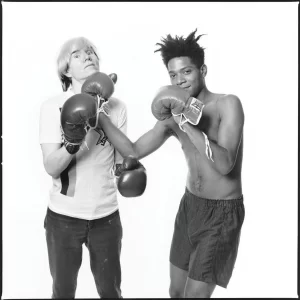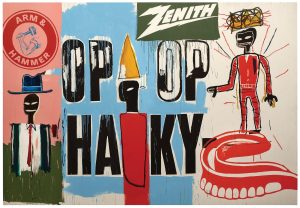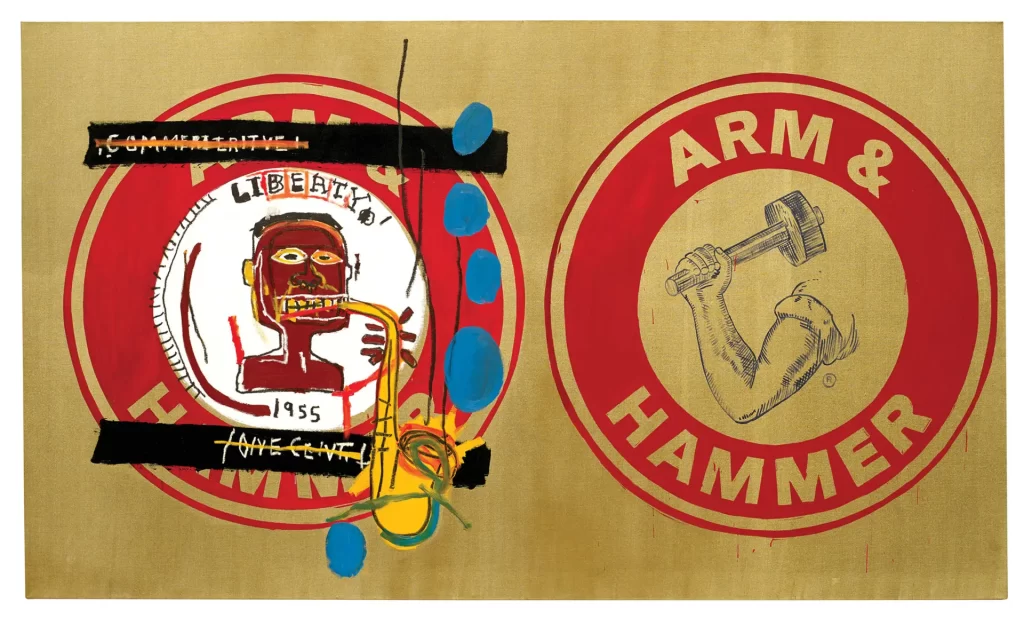Tsuktiben Jamir
The concept of what art may be and what art can look like are frequently confused. Andy Warhol (1928-1987) extended the viewers’ awareness of how they may approach experiencing art, which goes beyond simply creating visuals that made art appear to be something entirely new. He made excellent use of colour, form, and arrangement in his artwork. His creations continue to be often cited as illustrations of Gestalt ideas like repetition, figure and ground, negative space, etc. He may not be everyone’s cup of tea, but he has made his own art in his own unique ways throughout his career which was greatly inspired by the experiences throughout his life; Warhol believed that the artist should be a visionary rather than a mechanic.
And then we have Jean-Michel Basquiat (1960-1988), a poet, musician, and graffiti prodigy, who by the time he was 20 years old had perfected his characteristic painting technique of compulsive scribbling, mysterious symbols and patterns, and mask-and-skull iconography.

Courtesy: The Art Newspaper
Financial Times shared a heart-warming story about how these two powerhouses met in 1982 when the then 21-year-old Jean-Michel Basquiat was invited for lunch with his idol Andy Warhol by art dealer Bruno Bischofberger. Warhol snapped a Polaroid snapshot of him and Basquiat; Basquiat grabbed it, raced back to his studio, and two hours later had the double portrait “Dos Cabezas,” still wet, presented to the table (Two Heads).
This marked the beginning of a great friendship as well as a partnership as far as creating art was concerned. Between the years 1984 and 1985, Jean-Michel Basquiat and Andy Warhol together made 160 paintings, “à quatre mains,” some of which were the largest pieces ever produced in each artist’s career.
In order to celebrate the lives and works of these two talented artists, Louis Vuitton is showcasing an exhibition that comprises of a series of artworks that they have worked on. The exhibition “Basquiat x Warhol: Painting Four Hands” displays an array of styles and techniques in addition to addressing important issues like the incorporation of the African-American population into the history of North America—a continent where Warhol was a prominent icon-maker. The show, which includes more than 100 paintings that have been jointly signed by the two artists, also includes solo works by both and other significant artists active at the period in an effort to capture the spirit of the 1980s New York downtown art scene.
Also, the show includes “absolute classics,” according to Dieter Buchhart, the co-curator, such Felix the Cat (1984–85) and Ten Punching Bags (Final Supper) (1985–86), which have never been displayed together before. Warhol painted a likeness of Christ from a replica of The Last Supper by Leonardo da Vinci on each punching bag. The word “judge” was repeatedly written over these, and Basquiat added his signature crown symbol.

Courtesy: MENAFN
Suzanne Pagé, the co-curator added, “Today, art historians generally link this work to the aggressive and tragic atmosphere felt by an entire community and beyond at the time of the murder of the graffiti artist Michael Stewart, who was very close to Basquiat. All of this was happening in the midst of the Aids crisis.”
The nocturne “Taxi, 45th/Broadway,” originally owned by fashion designer Gianni Versace, serves as the show’s outstanding climax. Anecdote by Basquiat: A white cab driver, spewing graffiti expletives, denies a black passenger, leaving him on the dark pavement, melting into lovely black/purple streaks imprinted with the word “Negro.” The glowing taxi is highlighted by a projector with typical Warholian detachment and efficiency. Basquiat, who was well-off and popular in the art world, was frequently turned away by cab drivers and wait staff; this was his artistic retaliation, which makes the black figure that was before invisible apparent.
Exhibition Dates:
April 5-August 28
Venue:
Fondation Louis Vitton, 8 avenue du Mahatma Gandhi
Bois de Boulogne, Paris – France





